Note: The information in this article has been superseded by that published in Jonathan Ferguson’s important original research work, Thorneycroft to SA80: British Bullpup Firearms, 1901–2020. That book is available from the Headstamp Publishing website: https://www.headstamppublishing.com/bullpup-rifle-book
This post accompanies the fourteenth in a series of collaborative videos produced with ARES Researcher Ian McCollum, who also runs the Forgotten Weapons blog and YouTube channel. Using access to unique collections facilitated by ARES, this series of videos will examine a range of interesting weapons over the coming months. Each video will be accompanied by a blog post, here on The Hoplite, and supported by high quality reference photographs. – Ed.
Jonathan Ferguson
Genesis
Better known than either the Korsak E.M.1 or the Thorpe E.M.1 bullpup firearms covered so far in this series, is the so-called ‘Janson E.M.2’. It is often incorrectly supposed to be a direct ancestor of Britain’s present-day L85, but in fact only the concept was retained in the SA80. Stefan Kenneth Janson was the Anglicised adopted name of Captain Kazimierz-Stefan Januszewski, who in 1949 was head of a team of immigrant firearms designers based at Cheshunt, under the aegis of the ‘C.E.A.D.’ or ‘Chief Engineer & Superintendent of Armaments Design’, in turn part of the Armament Design Establishment (ADE), which had been relocated from RSAF Enfield during the war.
It should be noted that Janson’s E.M.2 was the second weapon to bear the designation (see the breakdown of the two ‘E.M.’ series weapons in our previous article). The first, developed c1945-1947, was an inertia-locked blowback design with fluted chamber, credited to a Lieutenant Jeziorański (whose name was habitually misspelled in official British documents). Work on this original E.M.2 was ordered stopped in 1947, save for a trial to be carried out with a weapon converted to chamber the U.S. T65 cartridge; unfortunately, nothing is known about this weapon. It seems to have been at this point that the weapon was retrospectively dubbed ‘E.M.2 Jesieranski’. There is some disagreement on whether ‘E.M.’ stood for ‘Experimental Model’ or ‘Enfield Model’). The Jeziorański E.M.2 bore two ADE codenames during development, first ‘Mamba’, and latterly (c.1951) ‘Yellow Acorn’.
Around the same time as this, the Korsak E.M.1 was selected as the starting point for the development of a potential new service rifle. Januszewski, who had worked under Korsak on the E.M.1, was selected to take the helm on this new project. Assisting was Sydney Hance, who would go on to design the original incarnation of the SA80. Leading the Armaments Design Establishment was Colonel Noel Kent-Lemon of the Royal Artillery, who would later shepherd into service the L1A1 Self-Loading Rifle.
Description
Januszewski’s design retained the receiver arrangement of Korsak’s gun, inspired by the FG42 (1st model), with its push-button disassembly latch, rotate-to-remove butt-plate/return spring/guide rod assembly, and push-pin grip frame. The magazine shares the built-in sliding charger guide of the Thorpe EM-1, and a similar rocker type magazine catch arrangement. Later variants included a welded-on shroud/guard to prevent accidental activation. This is located on the left side of the receiver, most likely to prevent a soldier’s own equipment from fouling the catch. It is not clear from the provisional manual which hand was used to remove and fit the magazine, but in any case, the shroud does not prevent access by the support hand thumb if the weapon is loaded as per modern practice. This modification would certainly have been required for military issue, given the exposed location and weak spring of the magazine catch.
The rest of the weapon was substantially redesigned. It was significantly lightened, partly by virtue of a permanently fixed ‘pencil’-profile rifle barrel, rather than the heavy barrel of the Korsak. This was now chambered for the new .280 Enfield intermediate cartridge. The gas system reverted to long-stroke operation, still with a typical rotary adjustable gas plug having Normal (‘N’), Excess (‘E’) and (in later variants), Shutoff (‘S’) positions. Roller-locking was also abandoned, but there was no return to the twin front rotating lugs of the FG-42. Instead the Korsak’s rollers were replaced by a pair of laterally-acting wedge-shaped lugs, close to those used in the German G41 and G43 rifles. These are forced into recesses in the receiver by means of the firing pin assembly, which is driven between the lugs when the weapon is in battery. When the lugs are not engaged, they prevent the firing pin from being released prematurely. There is no bolt carrier but rather a very complex bolt assembly (‘breech block’) with the outer forward portion acting as the bolt face, with the two lugs positioned just behind it. Cocking is achieved by the round lug on the piston assembly, which fits into a hole in the bolt (‘breech block’) and when the piston is pulled back (either by hand or in recoil), the firing pin/striker is withdrawn, allowing it to be caught by the spring-loaded sear on the bottom of the bolt. Cocking the weapon is difficult, in large part due to the physical effort required to draw back the striker. Designs that use the bolt carrier to override a pivoting hammer simply afford more mechanical advantage than those that require the user to pull back a striker spring via a mechanical linkage – in this case, the piston itself.
The entire trigger group was redesigned. The trigger mechanism was much simpler than Thorpe’s E.M.1 and even Korsak’s ingenious ‘slide’ trigger linkage. However, it did resort to a form of the now-standard linkage bar approach, referred to as the ‘tripping lever’. Although this is rather shorter and more rigid than is typically found in modern bullpups, the trigger pull remains indistinct and measures at a staggering 15 lbs on a trigger tester gauge. It is one of the worst triggers that the author has ever experienced, second only to the 20 lb pull of a ‘Brown Bess’ musket! Other examples have been tested with lower pull weights, with the average likely sitting around 11 lbs. The safety catch is borrowed from the M1 Garand, being easily reached and operated by the trigger finger, with some potential for accidental operation of the trigger due to the location of the safety lever inside the trigger guard. It also actuates a ‘safety bar’ at the rear of the trigger group, which intrudes upward into the bolt and prevents the sear from being operated.

The fire selector (‘change stud’) is a cross-bolt type similar to that of the German StG 44, with the right-hand position (which shows the marking ‘R’ for ‘Rounds’ or ‘Repetition’) being semi-automatic and the left (‘A’) for automatic fire. The selector has a slot cut in the top that on semi-automatic mode is positioned under the centre portion of the trigger bar (‘tripping lever’). This does several things to the trigger bar/tripping lever. First, it pushes the large projection at the rear of the bar upwards and into a corresponding curved recess in the head of the bolt. This means that the bolt must now override the tripping lever (which it does as soon as it begins to move backward after firing). Second, it permits the bar to pivot about the axis of the selector ‘stud’ and drop down into the slot in the selector. Finally, the bar is now free to reciprocate a short distance (there is a short track cut into the centre of the tripping lever where the selector passes through). This angling and sliding of the trigger bar activates the disconnector (‘sear lever’) by elevating it such that the bolt can override it and push it down. The tripping lever bears upon the disconnector (‘sear lever’), which sits adjacent to it inside the trigger mechanism housing. This in turn pulls the sear lever downwards and out of engagement with the sear (which is housed within the bolt in this design). The weapon will now not fire again until the trigger is released, which permits the tripping lever and therefore the sear lever (disconnector) to pop back up again and reconnect trigger with sear lever.
Adoption
Although the weapon was developed in parallel with the Thorpe E.M.1, it was agreed with the Americans that the latter would be dropped from comparative trials in order to speed up the selection process. The E.M.2 was also clearly the more mature and user-friendly of the two. Trials at home and abroad convinced British authorities that this was the No.4 rifle replacement that they needed, and a unilateral decision was taken to adopt the weapon. This was despite E.M.2 and indeed the other rifles having effectively failed US trials on the basis of insufficient lethality.
These trials also concluded that the US T25 Lightweight Rifle and the developmental T65 7.6 2mm (.30 calibre) round submitted for testing were ‘not suitable for Army Field Forces use because of its excessive recoil, blast, flash and smoke’, and nonetheless concluded that ‘of the basic types submitted for the test, the British .280 round is preferred’. This position was effectively overturned by the US Board of Ordnance, which refused to accept any cartridge less powerful than the .30-06 in service with the M1 Garand. If anything, the US at this stage favoured the Belgian FN Herstal design that would become the FAL, but at the same time were obviously not yet convinced by the .280 cartridge; facts not lost on E.M.2’s detractors.
It is worth noting that Britain had not been wholly obstinate in its adherence to .280. Compromises between the two calibres were offered by the UK, Canada, and Belgium for NATO trials as early as 1950. These consisted of ‘7mm Compromise’ (7 x 51mm, in two different bullet weights), ‘7mm Optimum’ (7 x 43 mm, again with two different bullets), ‘7mm Second Optimum’ (7 x 49.15 mm) and ‘7mm High Velocity’ (7 x 49.5 mm). These pleased neither side however. One might reasonably predict – as British E.M.2 detractors did – that the US would come to adopt the FN rifle and the 7.62 mm cartridge. Nonetheless, the E.M.2 was officially adopted in 1951 as Rifle, No.9 Mk.I (note that the ‘other No.9’ rifle, a .22 training weapon, is actually Rifle, N9; apparently the only ‘Naval Service Designation’ ever applied to a small arm).
The latter variant (there had been several) of the .280 Enfield cartridge was adopted alongside it as ‘Cartridge, 7mm S.A.A. Ball, Mk.1Z’. According to Anthony Williams, this definitive version of the 7 x 43 mm cartridge fired a 9.0 g bullet at 777 m/s (140 grains at 2,550 fps). The broader politics surrounding the adoption and cancellation of the E.M.2 are well detailed in the PhD thesis of Dr Matthew Ford (available online, see chapters 4-6), and in his recent book ‘Weapon of Choice’.
E.M.2’s initial supporters included the Armament Design Establishment whose future depended upon a home-grown design, and the Director of Infantry, for whom it seemed to fit the bill as a tactically flexible individual weapon. In particular, Infantry wanted a lightweight yet controllable automatic rifle in order to shift the fire base of the infantry section (squad) away from dependence upon the Bren LMG. Some later observers have argued that these institutions, along with the Director General of Artillery/Director of Artillery (Small Arms), worked together to try to ensure that the E.M.2 would be adopted regardless of external factors. In fact, as external circumstances changed, support for E.M.2 fell away. In the end, the No.9 rifle was to become the shortest-lived British service arm in history.
Decline
The E.M.2 was never to enter mass production. Famously, it was sunk by none other than Winston Churchill, whose Conservative party won the General Election in 1951. The E.M.2 had been something of a pet project for the outgoing Labour government, and Churchill was sceptical. After the US announced in January 1952 that they would not adopt the .280 calibre, Churchill revealed a joint US-UK decision made during talks in Washington that month. Both nations would hold off on adopting a new rifle and would reconsider their options. The actual exchange upon which all of the rumour and speculation about backroom deals with the US is based follows below:
‘Mr. Wyatt – asked the Minister of Defence whether he will make a statement, consequent upon his conversations in the United States of America, on the future of the .280 rifle.
‘The Prime Minister – As was indicated in the Communiqué which was issued after my talks in Washington on 9th January, neither we nor the United States consider it wise to take the important step of changing our rifles at the present time, and we shall both continue to rely upon rifles and ammunition which are now in stock or are being produced. Both countries will produce new rifles and ammunition on an experimental scale only, and this will apply to the production of the.280 rifle in the United Kingdom. Every effort will be made to produce a standard rifle and ammunition for all N.A.T.O. countries.’
‘Mr. Wyatt – Does that mean that Her Majesty’s Government have now abandoned the hope of persuading the Americans that our rifle is better than theirs?’
‘The Prime Minister – I see no prospect of carrying out that process of conversion.’
– House of Commons Debate 20 February 1952 vol 496 c234 234
.280 was clearly dead, and the E.M.2, despite continuing experimental work, was in serious trouble. It was clear that Churchill was going to go all-in on a common NATO rifle in a common NATO calibre, and that the Americans were unlikely to change their minds on E.M.2, even given a calibre change. Despite the politics involved, the move was arguably not a political one. As his later clarification (in which he also backs E.M.2 as a possible special-issue weapon for Paratroopers) shows, Churchill was convinced of the need for NATO standardisation of both ammunition and small arms. This was partly to ease logistical supply in the field, but also in order to be able to better exploit the American industrial base that had allowed the Allies to win the Second World War. If Britain found itself short of rifles with a NATO/USSR conflict looming, it would be able to place an order for more rather than rely on its own very limited produiction capability.
Standardisation of small arms between the western powers was not a new idea. The standing British intent during the Second World War had been for Britain to adopt the .30-06 cartridge and the M1 Garand rifle; until it became apparent that the US was determined to replace them. As British advocates and close-run comparative trials had failed to convince the US or Canada of the superiority of either the .280 cartridge or the E.M.2 rifle, Churchill felt that British effort should concentrate upon convincing both countries to adopt the FN FAL alongside the nascent 7.62 mm NATO cartridge. In fact, it appears that he took his decision under the illusion that this was practically a foregone conclusion and, for a time, it looked as though he might have been right. Canada adopted the FAL in 1953, which only added momentum to the British drive toward the type. Of course, it soon became apparent that the US was going to ditch the T48 FN FAL just as it had the E.M.2, and instead go it alone with a rechambered and modernised M1 Garand (T44, the future M14).
Although it was his primary motivation, Churchill’s standardisation argument does not reflect his full view on the controversy. Whereas he claimed that he regarded the two designs as ‘neck and neck’, at one point even stating that he thought the .280 rifle “the best”, he was clearly not personally convinced by the E.M.2. In fact, Churchill was chief among a number of detractors in positions of influence that helped kill the weapon off even after it was successfully converted to 7.62 x 51 mm. He was opposed to the very idea of a weapon designed around controllable automatic fire, and was convinced that soldiers would waste precious ammunition if given the opportunity to do so. This appears to have naturally led him (and others who thought as he did) to view the more traditionally-designed FAL in a full-power chambering – and especially a version modified for semi-automatic fire only – in a more favourable light. He further believed that “…the F.N. is a better weapon both with the bayonet and with the butt and is capable of giving confidence to a soldier in a mêlée.”
There had been engineering difficulties with converting E.M.2 to the new T65 cartridge, with the result that the three initial prototypes had had to be withdrawn from US trials in 1952. By the time that small quantities of functional 7.62 x 51 mm E.M.2 rifles had been produced, the type was already out of the running. 5,000 FAL rifles (X8E1) had already been ordered in December 1953 for troop trials, and had acquitted themselves well. For its part, the E.M.2 had lost some of its favourable handling characteristics in the conversion to 7.62mm, losing any edge in performance (other than its shorter overall length) that it may have had over the FAL.
The Legend
Today, despite a very positive British military experience with the L1A1 SLR rifle, the E.M.2 enjoys a near-mythical ‘what might have been’ reputation among small arms enthusiasts (especially British ones). This was cemented almost as soon as the rifle had failed, and only grew with the distance of time. George Wigg MP reflected the views of many in Britain when he told Parliament that it was ‘…the finest rifle in the world’ in 1963. In reality, the .280 Enfield cartridge failed to make its case as a substitute for existing full-power offerings. The weapon itself was also outperformed in trials by the FN, if only marginally. E.M.2 did come out on top in the US sand and mud tests, for example, as this US trials report shows (p.21-22).
There was a reasonable chance that the US might adopt the FAL, and indeed Canada, Belgium, and other countries did, making it a NATO standard rifle, if not the NATO standard that Churchill had sought. Janusewski’s is a complex and expensive design by comparison with the FAL, with its many different curved surfaces and recesses, each requiring separate or even multiple machining operations. Dugelby alleges that the bolt carrier assembly alone cost £50 to produce; well over £1,000 in today’s money, although it must be remembered that this was for a pre-production, practically hand-built weapon. Significant cost savings would no doubt have been made in a final redesign for mass-production, aside from the sheer economy of scale. For example, the wooden furniture and walnut veneer was slated to be replaced with a polymer fore-end and fibreglass cheekpiece, respectively. Yet as cheaply as the E.M.2 might have been made in the long run, it could not be made (or maintained) as cheaply as the FAL. Even the ADE admitted that the EM-2 was costlier to produce, although they claimed that this was by design, since the weapon had been intended to serve (if required) as a ‘sniper rifle’ (hence the complex bolt with its twin front locking lugs and, presumably, the machined receiver). One estimate placed projected production at 6 FAL rifles for every 5 E.M.2 models. Britain simply could not afford as many of the latter. Keeping the E.M.2 would have been just as political a decision as ditching it; taking a risk on an unproven and expensive home-grown design (even in 7.62 NATO) in order to prop up the UK small arms industry. It seems unlikely that such a ‘boutique’ gun would have found success on the export market, and production would in any case have struggled to meet even domestic needs.
In any case, it is all too easy to criticise in hindsight those who made the ‘safe’ call in the interests of international cooperation and a future where NATO, and especially the United States, would set military priorities and trends for decades to come. The FAL was not only cheaper, but faster and less risky to produce. With the Cold War burgeoning and with a substantial British post-WW2 economic deficit, it made a lot of sense to licence the FAL, especially if the gamble on NATO standardisation had paid off. Nor was Churchill a lone voice of opposition to this mould-breaking futuristic weapon. There were inevitable complaints that a bullpup rifle could not be used for parade square drills. The weapon was light and compact certainly, but ergonomics were by no means stellar (and the trigger really is terrible). Recent developments in so-called ‘general-purpose calibres’ indicate that the vaunted .280 cartridge was probably not the ‘ideal calibre’ that it is often still claimed to be. Even one of its most vocal advocates (Wigg) had to admit in a political rearguard action fought in the House of Commons in 1954 that E.M.2 looked ‘…more like the weapon associated with Chicago gangsters than a military weapon…’. In the subsequent vote, fellow E.M.2 advocate Woodrow Wyatt MP failed (albeit by only 34 votes) to gain support for his motion ‘That this House deplores the decision of Her Majesty’s Government to adopt the Belgian F.N. rifle for use by the British Army in place of the new British E.M.2 rifle’.
On the other hand, the E.M.2 was undoubtedly a design ahead of its time; a lightweight, straight-line design, bullpup, select-fire assault rifle fitted with an optical sight as standard, and chambered for a true intermediate calibre cartridge. If we do allow the luxury of hindsight, time and experience has shown that Churchill and others placed excessive emphasis on strict standardisation and interoperability, as even those nations adopting the FAL settled on different build standards. Today, NATO countries maintain their own logistical chains for the most part, and even common cartridge types are not necessarily interchangeable in the many different small arms in use across the organisation.
In recent years, reliance upon intermediate cartridges and emphasis upon bullpup designs has also been challenged, although this has occurred well beyond the likely service life of E.M.2. In any case, Janusewski, Kent-Lemon, Hance and the rest of the ADE team deserve credit for pushing the small arms technology envelope as far as it would go in the face of robust opposition, and very nearly succeeding. Today’s near-universal military adoption of intermediate calibre selective-fire rifles with optical sights (many of which embody either straight-line design, bullpup layout, or both) shows that the concept was sound, even if the execution and political support was lacking.
Further Reading
See the E.M.2 page on Forgotten Weapons for more information, photography, a partial scanned manual, and a previous video featuring a 7.62 x 51 mm example.
Dugelby, Thomas B. 1980. EM2 Concept and Design: A Rifle Ahead of Its Time. Toronto: Collector Grade Publications.
Gelbart, Marsh. 2002. Back to the Future: The Story of Britain’s Lost Bullpups. Small Arms Review.
Williams, Anthony. 2014. British Self-Loading Rifles, 1944 – 1953. Presentation for the Historical Breechloading Small arms Association (HBSA).
Technical Specifications
Calibre: 7 x 43 mm (.280 Enfield)
Overall length: 889 mm (35”)
Barrel length: 622 mm (24.5”)
Weight (unloaded): 3.75 kg (8.27 lbs)
Feed device: 20-round detachable box magazine
Special thanks to the National Firearms Centre at the Royal Armouries, who graciously allowed us access to their world-class collection for this and other videos and photos, and to the Defence Academy of the United Kingdom at Shrivenham, for allowing us to handle and fire an E.M.2 rifle. Thanks are also due to Neil Grant.
This is Part 3 in a series of posts examining the developmental history of the United Kingdom’s E.M.1 and E.M.2 designated firearms. Part 1 is available here, and Part 2 is available here.
Remember, all arms and munitions are dangerous. Treat all firearms as if they are loaded, and all munitions as if they are live, until you have personally confirmed otherwise. If you do not have specialist knowledge, never assume that arms or munitions are safe to handle until they have been inspected by a subject matter specialist. You should not approach, handle, move, operate, or modify arms and munitions unless explicitly trained to do so. If you encounter any unexploded ordnance (UXO) or explosive remnants of war (ERW), always remember the ‘ARMS’ acronym:
AVOID the area
RECORD all relevant information
MARK the area from a safe distance to warn others
SEEK assistance from the relevant authorities

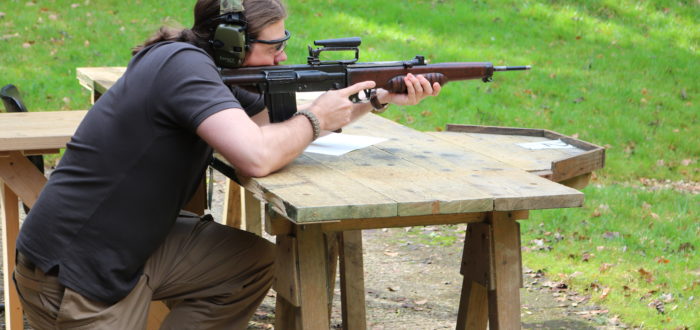







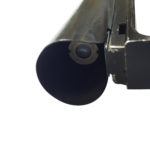
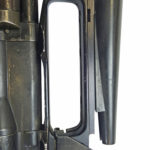
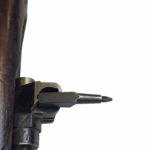


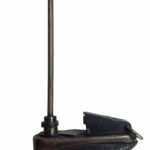
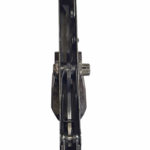
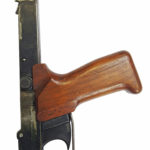

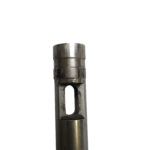
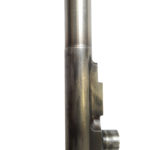
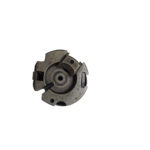

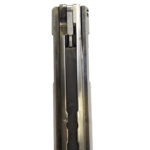
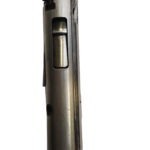

Pingback: A Cartridge in Brief: 4.85 × 49 mm British – Armament Research Services